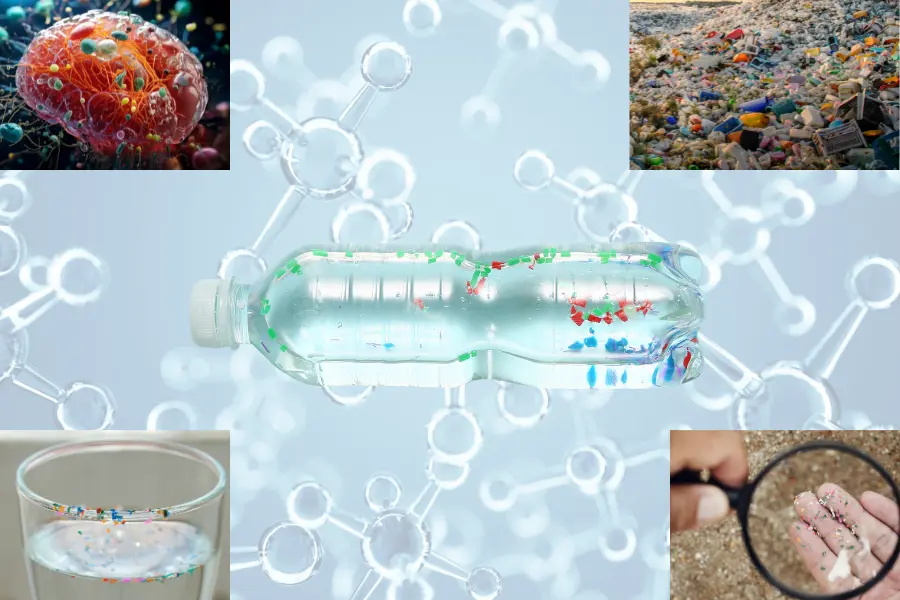Isn't the water from my tap safe?
Yes — technically. The water supplied to your home must meet the Australian Drinking Water Guidelines, which means it is considered safe to drink. But “safe” doesn't always mean optimal. To meet regulatory standards and survive long journeys through aging infrastructure, water is treated with chemicals like chlorine, chloramines, and fluoride.
These additives serve a purpose in transit — but once the water reaches your home, they’re no longer needed. In fact, many families prefer to remove them for health, taste, and peace of mind. That’s where filtration makes all the difference.
Scroll down to explore what might be in your water — and how to remove it.”
Chlorine & Chloramines in Australian Drinking Water
To ensure public health, Australian water utilities disinfect drinking water with chlorine and sometimes chloramine. These chemicals are essential during water transport, keeping it free from harmful microorganisms.
Regulatory Standards (ADWG)
- Chlorine: ADWG recommends levels not exceeding 5 mg/L, with typical municipal levels between 0.5–1.5 mg/L.
- Chloramine: Maximum recommended level is 4.1 mg/L, often used as a secondary disinfectant due to its long-lasting effect in pipelines.
Sources: health.wa.gov.au, logan.qld.gov.au
Health & Skin Considerations
While safe by national guidelines, chlorine and chloramine can react with organic matter in water to create disinfection by-products (DBPs) such as trihalomethanes (THMs) and haloacetic acids (HAAs) — linked to potential long-term health risks when consumed in high amounts over time.
Additionally, many people report skin irritation, dryness, and flare-ups of eczema when showering or bathing in chlorinated water. This is especially common among children and those with sensitive or allergy-prone skin. Chlorine strips away natural oils, potentially worsening dryness or inflammation.
Why Consider Removing Them?
Chlorine and chloramine are no longer needed once water reaches your home. Whole home water filtration can remove these chemicals at the point of entry — improving water taste, smell, and feel on your skin. For families with sensitive skin or young children, this can make a noticeable difference in daily comfort and overall wellbeing.

Fluoride in Drinking Water: Rethinking Its Role
While fluoride has long been added to public water supplies to prevent tooth decay, recent developments and expert insights are prompting a reevaluation of its necessity and safety.
Landmark Legal Ruling in the U.S.
In a significant decision, the United States District Court for the Northern District of California ruled that fluoridation at levels commonly found in U.S. drinking water poses an "unreasonable risk" to children's health, particularly concerning cognitive development. This ruling mandates the Environmental Protection Agency (EPA) to take regulatory action to mitigate these risks .
Global Perspectives: Europe's Stance on Fluoridation
Contrasting with practices in countries like the U.S. and Australia, most Western European nations have rejected water fluoridation. Countries such as Austria, Belgium, Denmark, Finland, France, Germany, Iceland, Italy, Luxembourg, Netherlands, Norway, Sweden, and Switzerland do not fluoridate their water supplies. Despite this, these countries have not experienced higher rates of tooth decay, suggesting that alternative dental health strategies can be equally effective .
Expert Insight: Dr. Staci Whitman on Oral Health
Dr. Staci Whitman, a board-certified pediatric dentist, emphasizes the importance of the oral microbiome in overall health. She advocates for the use of hydroxyapatite in dental care—a naturally occurring mineral that can remineralize teeth and support oral health without the potential risks associated with fluoride. According to Dr. Whitman, hydroxyapatite toothpaste can be more effective than fluoride in strengthening enamel and maintaining a healthy oral environment .


Micro plastics & Nano plastics: The Hidden Contaminants in Your Water
As plastic pollution continues to rise globally, micro plastics (less than 5 mm) and nano plastics (smaller than 100 nm) are making their way into our waterways — and increasingly, into our drinking water.
How Do They Get Into Tap Water?
These microscopic plastic particles come from the breakdown of larger plastic waste, synthetic fabrics, tire wear, and even personal care products. They can infiltrate water supplies through surface runoff, wastewater discharge, and aging infrastructure. Neither traditional municipal filtration nor most home systems are designed to effectively remove them.
- A 2022 study by the University of Newcastle (commissioned by WWF) estimated the average person could be ingesting up to 5 grams of plastic each week — the equivalent of a credit card — through food, air, and water.
- A 2024 UNEP report confirmed micro plastics were found in 94% of tap water samples across multiple countries, including Australia.
Health Impacts of Ingesting Micro plastics
Although research is ongoing, early studies show that micro and nano plastics may:
- Trigger inflammation and oxidative stress.
- Disrupt endocrine function, mimicking hormones in the body.
- Pass through the gut barrier, potentially reaching organs and tissues.
- Attract and carry harmful contaminants like PFAS, heavy metals, and pesticides on their surfaces.
The smallest particles — nano plastics — are particularly concerning due to their ability to cross cellular membranes, making their long-term effects difficult to predict.
Why Filtration Matters More Than Ever
Most municipal water treatment systems are not equipped to filter out particles this small. At Safer Water, our advanced multi-stage filtration systems include sub-micron filtration and Reverse Osmosis, capable of significantly reducing micro plastics and many nano plastics from your home’s water supply.
For families prioritizing long-term health and environmental awareness, upgrading your home’s filtration is one of the most proactive steps you can take.
Ready for Safer Water?
Let's do something about your health today, click on the button below and book your in home consultation and free water test